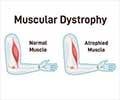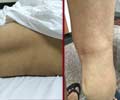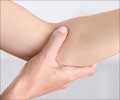The drug nusinersen is undergoing clinical trials for the treatment of the genetic neurological condition called infantile spinal muscle atrophy.
Highlights
- Infantile spinal muscle atrophy is a genetic neurological disorder where babies often do not cross two years of age
- Currently, there is no specific treatment for this condition
- A drug called nusinersen is under investigation for the treatment of spinal muscle atrophy and has shown positive results in a small clinical trial
Spinal muscle atrophy is of three types. Type I or infantile spinal muscle atrophy is the most severe form and is evident within a few months after birth. Children with this form of spinal muscle atrophy usually do not survive beyond their second birthday, unless provided major breathing and eating support. Other less severe forms of spinal muscle atrophy are the Type II or the intermediate type which appears around 6 to 8 months of age, and Type III which appears around 2 to 17 years of age.
Spinal muscle atrophy currently does not have any treatment and children receive only symptomatic treatment.
Researchers are now evaluating an experimental drug, nusinersen in the treatment of infantile-onset spinal muscle atrophy. Human beings have a similar other gene to SMA1 called SMA2, which produces a small amount of SMA protein. Nusinersen modifies the way the body reads the SMN2 gene and therefore increases the production of SMN protein.
In their study, the researchers treated 20 babies of either sex with infantile-onset spinal muscular atrophy that appeared between 3 weeks and six months of age. The babies had SMN1 homozygous gene deletion or mutation, which led to the condition. A dose of 12 mg every 4 months was used during the study. Some babies received an initial 6 mg dose, which was then increased to 12 mg. The drug was administered into the fluid around the spinal cord through a lumbar puncture procedure. The babies received the drug over a period of 18 to 32 months. They were regularly assessed through physical examination, blood and spinal fluid tests, and electrocardiograms (ECGs).
Among the remaining babies, the researchers found that for most babies, nusinersen:
- Improved muscle function. The babies showed improvement in activities like sitting and rolling over independently, head control, kicking, grasping, standing and even walking. The overall muscle function improved in 14 out of the 18 babies assessed. Muscle skills like ability to grasp, kick and sit improved in 16 out of 20 babies.
- Improved nerve activity. The nerve activity of the peroneal nerve behind the knee and the ulnar nerve at the wrist increased.
- Appears to be relatively safe. One baby developed mild neutropenia (reduced white blood cell counts) and one developed mild vomiting during the study. The babies did develop complications like breathing difficulties and respiratory infections, but the researchers have linked these to the disease rather than being caused by the drug.
The researchers advise that the medication should not be looked upon as a cure of the condition. Though an improvement was noted in the babies, the muscle function did not recover to normal levels.
Reference
- Finkel RS et al. Treatment of infantile-onset spinal muscular atrophy with nusinersen: a phase 2, open-label, dose-escalation study. The Lancet. DOI: (http://dx.doi.org/10.1016/S0140-6736 (16)31408-8)
















